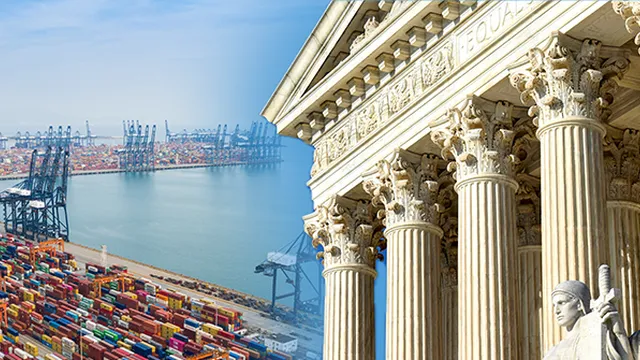
Supreme Court strengthens Trump's tariff powers amid legal challenges
2025-06-28 15:02- The Supreme Court ruled on a significant case involving the Federal Communications Commission and a telecom subsidy.
- The decision clarified congressional delegation of powers during emergencies and upheld the legal grounding for Trump's tariff implementation.
- This ruling strengthens Trump's trade agenda and highlights a favorable trend for his administration in recent judicial outcomes.
Express your sentiment!
Insights
On a recent Friday, the Supreme Court delivered a significant ruling regarding the legality of President Trump's tariffs. This decision was linked to a case involving the Federal Communications Commission and Consumers' Research, which the court ruled in favor of, thus reinforcing the boundaries of executive power under the International Emergency Economic Powers Act. The ruling emphasized that Congress may delegate certain powers to the executive branch during national emergencies, as long as specific guidelines are provided. This interpretation bolstered Trump's tariff authority, pushing back against legal challenges aimed at diminishing his trade agenda. The implications of this ruling are far-reaching. The Court's majority opinion, authored by Justice Elena Kagan, clarified that Congress's ability to delegate authority to executive agencies is well within constitutional bounds, thus invalidating the argument that such delegation would violate the Constitution's nondelegation doctrine. The decision highlighted the need for a clear framework, which the International Emergency Economic Powers Act provides by stipulating that the President can only act in response to declared emergencies linked to foreign threats. This ruling does not just protect existing tariffs but is also a significant legal precedent that could influence future cases regarding executive action and trade policies. Chief Justice William Howard Taft’s historical precedent from the 1928 ruling in Hampton, Jr. & Co. v. United States reinforces that Congress can guide executive action through legislation, allowing Trump's use of emergency powers to be justified within this legal framework. Moreover, the Supreme Court's recent term has been viewed as favorable to Trump, with several rulings aligning with his administration's policies. The conservative majority within the Court has faced criticism from liberal justices, who argue that this approach threatens the foundational principles of the American legal system. In contrast, the ruling may embolden Trump's administration and embolden ongoing and future aggressive economic measures. The overall impact of these judicial decisions could reshape the landscape of executive power and its limits in times of economic crisis or national emergency.
Contexts
The decisions made by the Supreme Court play a crucial role in shaping the balance of power within the executive branch of the United States government. Over the years, the Court has addressed numerous cases that challenge or define the limits of executive authority, often reflecting the prevailing political and societal attitudes of the time. These rulings are essential in either curbing or expanding presidential power, particularly in areas such as foreign policy, national security, and the administration of laws. As the judiciary interprets constitutional provisions and federal statutes, its decisions set significant precedents that influence executive actions and the extent of its reach. For example, landmark cases such as United States v. Nixon (1974) demonstrated the judiciary's ability to place limits on executive privilege, establishing that no person, not even the President, is above the law. This decision reinforced accountability and transparency within the executive branch, signaling that the President’s actions could be subject to judicial review. Similarly, the Court's ruling in Youngstown Sheet & Tube Co. v. Sawyer (1952), where President Truman's seizure of steel mills to prevent a strike was deemed unconstitutional, illustrated the principle that the executive cannot act unilaterally without congressional authority. Such decisions underscore the need for a system of checks and balances designed to prevent the abuses of power. Recent Supreme Court rulings continue to reflect this dynamic interplay between the judiciary and executive power. In cases involving executive orders and national security, the Court has sought to navigate between the need for robust national defense and the protection of individual rights. This has been particularly evident in cases that address the limits of executive immigration policy and the Federal government's authority over issues such as environmental regulation and healthcare. As societal values change, so too does the interpretation of the Constitution, which can result in shifts in executive power and prerogative. The ongoing judicial scrutiny of executive actions reveals a commitment to uphold the rule of law while giving due consideration to the complexities of governance in a democratic society. Moving forward, the potential for future conflicts between the Supreme Court and the executive branch remains significant, particularly in politically charged contexts. As new challenges arise, such as those related to technology, personal privacy, and executive accountability during crises, the Supreme Court's decisions will continue to play pivotal roles in defining the scope of executive power. Ultimately, the judiciary stands as a critical arbiter in the relationship between the branches of government, safeguarding democratic principles and ensuring that executive authority is exercised within the confines of the law.